When it comes to understanding the nutritional value of cheese slices, there are several important factors to consider. Cheese, a popular dairy product, has a wide range of nutritional components that can vary depending on the type of cheese. Whether you’re a cheese lover or simply curious about its health benefits, this article will explore the diverse aspects of cheese slice nutrition.
- Cheese is a good source of protein, calcium, and other essential nutrients.
- Aged and hard cheeses may be suitable for individuals with lactose intolerance due to their low lactose content.
- Research suggests that the saturated fats in cheese may not have the same negative effects on blood fat levels as once thought.
- Choosing low-sodium cheese slices is important as different types of cheeses have varying sodium contents.
- Cheese may provide probiotics, contributing to gut health.
- Enjoying cheese slices in moderation can be a part of a balanced diet.
The Basics of Cheese Slice Nutrition
To get a clear understanding of the nutritional profile of cheese slices, let’s start by examining their calorie, fat, and protein content. These three components play a significant role in determining the overall nutritional value of this popular dairy product.
Cheese slices vary in their calorie content depending on the type of cheese. For example, cheddar cheese slices typically contain around 110 calories per 1-ounce portion. However, it’s important to note that different types of cheeses may have slightly different calorie counts. Understanding the calorie content can help individuals make informed choices when incorporating cheese slices into their diets.
When it comes to fat content, cheese slices can range from low to high, depending on the variety. For individuals looking for lower fat options, reduced-fat or skim milk cheese slices may be a suitable choice. On the other hand, those who are not concerned about fat intake can opt for full-fat cheese slices to enjoy their rich and creamy texture.
Cheese slices are also a good source of protein, which is essential for building and repairing tissues in the body. Protein content in cheese slices can vary depending on the type of cheese. For instance, Swiss cheese slices provide approximately 8 grams of protein per 1-ounce serving. Incorporating cheese slices into meals and snacks can help individuals meet their daily protein requirements.
| Cheese Type | Calories | Fat (g) | Protein (g) |
|---|---|---|---|
| American cheese | 104 | 8.5 | 6.7 |
| Cheddar cheese | 113 | 9.4 | 7 |
| Swiss cheese | 106 | 8.3 | 7.6 |
A Quick Glance at the Nutrition Information for Popular Cheese Slices:
American cheese: 104 calories, 8.5g fat, 6.7g protein
Cheddar cheese: 113 calories, 9.4g fat, 7g protein
Swiss cheese: 106 calories, 8.3g fat, 7.6g protein
Source: Dietary Guidelines for Americans, National Nutrient Database
Understanding the calorie, fat, and protein content of cheese slices is key to making informed dietary choices. Whether you’re looking to enjoy a flavorful sandwich or add a delightful touch to your favorite recipes, knowing the nutritional profile of cheese slices can help you create a balanced and enjoyable eating plan.
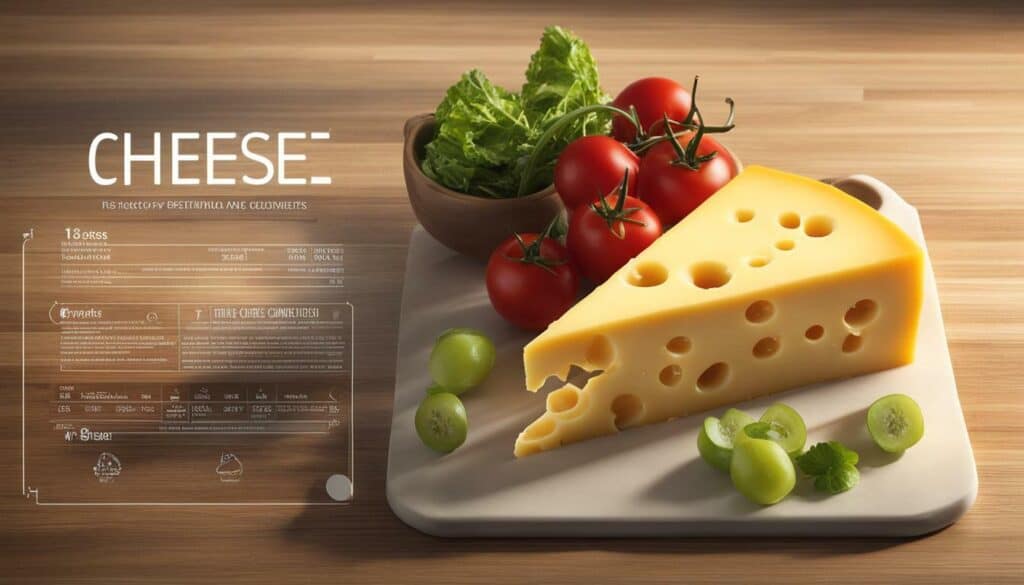
Essential Vitamins and Minerals in Cheese Slices
Cheese slices can be a good source of essential vitamins and minerals, providing valuable nutrients for our bodies. Different types of cheeses offer varying amounts of these important micronutrients. Let’s take a closer look at some of the key vitamins and minerals found in cheese slices:
Vitamins:
- Vitamin A: Cheese slices, particularly those made from cow’s milk, are rich in vitamin A. This fat-soluble vitamin plays a vital role in maintaining healthy vision, immune function, and cell growth.
- Vitamin B12: Another vitamin commonly found in cheese slices is vitamin B12. This important nutrient is essential for the formation of red blood cells and proper neurological function.
- Vitamin D: Some cheese slices, especially those made from fortified milk, can provide a small amount of vitamin D. This vitamin helps regulate calcium and phosphate levels, promoting bone health.
Minerals:
- Calcium: Cheese slices are an excellent source of calcium, a mineral necessary for strong bones and teeth. Adequate calcium intake is also essential for muscle function and proper blood clotting.
- Phosphorus: Phosphorus is another mineral found in cheese slices, playing a crucial role in bone structure, energy production, and maintaining pH balance in our bodies.
- Zinc: Cheese slices can also contribute to our daily zinc intake. Zinc supports immune function, wound healing, and DNA synthesis.
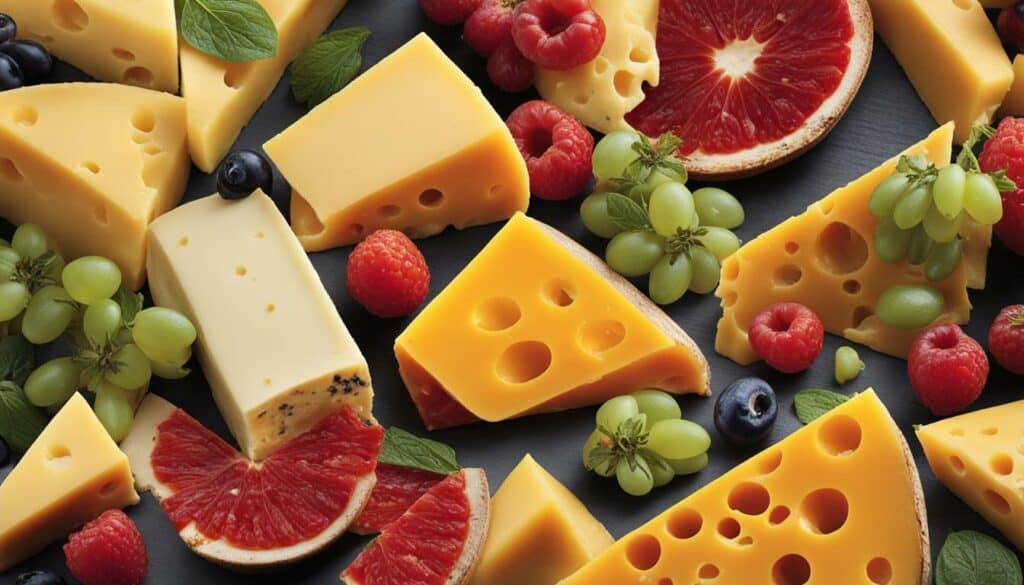
It’s important to note that the nutrition content may vary depending on the type of cheese and the brand. To get a better understanding of the specific vitamins and minerals in the cheese slices you consume, refer to the nutritional information provided on the packaging or consult a registered dietitian.
Remember, while cheese slices can provide valuable nutrients, it’s crucial to consume them in moderation as part of a balanced diet. Incorporate a variety of dairy products and other food groups to ensure you’re meeting your daily nutritional needs.
In summary, cheese slices can be a good source of essential vitamins and minerals, including vitamins A, B12, and D, as well as calcium, phosphorus, and zinc. These nutrients contribute to various aspects of our overall health, from maintaining strong bones and teeth to supporting immune function and cell growth. Enjoy cheese slices as part of a balanced diet, but remember to be mindful of portion sizes and choose low-sodium options when possible.
Sodium and Cholesterol Content in Cheese Slices
While cheese slices can offer nutritional benefits, it’s important to be aware of their sodium and cholesterol content. Different types of cheeses have different sodium contents, so it’s important to choose low-sodium options when possible. Excessive sodium intake is linked to high blood pressure, which increases the risk of heart disease and stroke. According to the Dietary Guidelines for Americans, the recommended daily sodium intake for adults is no more than 2,300 milligrams. However, individuals with certain health conditions, such as hypertension, may need to further limit their sodium intake to 1,500 milligrams per day.
The table below provides the sodium and cholesterol content for different types of cheese based on a 1 ounce portion:
| Cheese Type | Sodium (mg) | Cholesterol (mg) |
|---|---|---|
| Cheddar | 174 | 28 |
| Swiss | 53 | 26 |
| American | 221 | 28 |
As you can see, the sodium and cholesterol content can vary among different types of cheese. If you’re watching your sodium intake, opting for lower sodium options like Swiss cheese can be a better choice. Additionally, it’s important to practice portion control when consuming cheese slices to manage your intake of sodium and cholesterol. Incorporating a variety of low-sodium cheeses into your diet can help you enjoy the taste and nutritional benefits of cheese while still maintaining a heart-healthy diet.
“When it comes to cheese slices, it’s essential to pay attention to the sodium and cholesterol content. Opting for low-sodium options and limiting portion sizes can help individuals maintain a heart-healthy diet while still enjoying the taste and nutritional benefits of cheese.” – Dr. Nutrition
Remember, cheese slices can be a part of a balanced diet when consumed in moderation. It’s important to consider your overall dietary needs and health goals when incorporating cheese into your meals. By choosing low-sodium options and practicing portion control, you can enjoy the deliciousness of cheese slices while keeping an eye on your sodium and cholesterol intake.
Carbohydrates in Cheese Slices
Although cheese slices are not typically high in carbohydrates, it’s still important to consider their contribution to our daily intake. Carbohydrates are one of the three major macronutrients, along with proteins and fats, that provide us with energy. While cheese slices may not be a significant source of carbohydrates, their carb content can vary depending on the type of cheese. For those following a low-carb or keto diet, it’s essential to be mindful of all the sources of carbs in our meals, including cheese slices.
To put it into perspective, let’s take a look at the carbohydrate content of some common types of cheese. Parmesan, for example, contains less than 1 gram of carbohydrates per ounce, making it a great choice for those watching their carb intake. Cheddar cheese, on the other hand, typically has around 0.5 grams of carbohydrates per ounce, while mozzarella has slightly higher carb content at around 1 gram per ounce. These numbers may seem small, but they can add up if you consume multiple cheese slices throughout the day.
When incorporating cheese slices into your diet, it’s important to be mindful of the other foods you consume that may contribute to your overall carbohydrate intake. If you’re aiming for a low-carb or keto lifestyle, it’s best to consult with a healthcare professional or a registered dietitian to determine the appropriate amount of carbohydrates for your individual needs. Remember, balance is key, and it’s all about finding the right balance of macronutrients that works best for you.
Table: Carbohydrate Content of Common Cheese Slices
| Cheese Type | Carbohydrates per Ounce |
|---|---|
| Parmesan | Less than 1 gram |
| Cheddar | Around 0.5 grams |
| Mozzarella | Around 1 gram |
Remember, cheese slices can be a delicious and convenient addition to your meals, but it’s essential to be mindful of their contribution to your overall macronutrient intake. Whether you’re watching your carb intake, following a specific diet, or simply striving for a balanced eating plan, understanding the nutritional composition of the foods you consume is key to making informed choices that align with your goals.
If you have lactose intolerance, you may be relieved to know that certain types of cheese slices can be a viable option for you. While milk and other dairy products may cause discomfort due to their lactose content, some cheeses, like aged and hard cheeses, are naturally low in lactose. This means that they contain minimal amounts of lactose, making them easier for individuals with lactose intolerance to digest. So, if you’re a cheese lover who has been missing out, don’t worry – you can still enjoy cheese slices as part of your diet.
Cheese slice nutrition can vary depending on the type of cheese. However, most cheese slices are a good source of protein, calcium, and other essential nutrients. Protein is important for building and repairing tissues in the body, while calcium is vital for strong bones and teeth. By incorporating cheese slices into your meals, you can ensure that you’re getting these important nutrients.
It’s important to note that cheese also contains saturated fats. However, research suggests that the saturated fats in cheese may not have the same negative effects on blood fat levels as once thought. In fact, some studies have even shown that certain types of cheese can have a neutral or positive impact on cholesterol levels. As with any food, moderation is key. So, while it’s okay to enjoy cheese slices, it’s important to consume them in moderation as part of a balanced diet.
When choosing cheese slices, it’s also important to consider their sodium content. Different types of cheeses have different sodium levels, so it’s a good idea to opt for low-sodium options whenever possible. This can help to reduce your overall sodium intake and promote better heart health.
In addition to protein, calcium, and potential benefits for cholesterol, cheese slices may also provide probiotics. Probiotics are beneficial bacteria that can contribute to gut health. While not all cheese slices contain probiotics, some varieties, like certain types of cheddar, Swiss, and gouda, may contain these helpful microbes.
In conclusion, if you have lactose intolerance, certain types of cheese slices can still be enjoyed as part of your diet. These slices are low in lactose and can provide important nutrients like protein, calcium, and even potential benefits for cholesterol levels. When selecting cheese slices, opt for low-sodium options and consider varieties that may contain probiotics. Remember, moderation is key, so enjoy your cheese slices as part of a balanced diet.
Contrary to popular belief, recent research suggests that the saturated fats in cheese may not be as detrimental to our health as previously thought. While it’s true that cheese does contain saturated fats, studies have shown that these fats may not have the same negative effects on blood fat levels as once believed. In fact, some research indicates that certain types of saturated fats found in cheese, such as those in full-fat dairy products, may even have a neutral or potentially beneficial impact on health.
“Cheese is often unfairly demonized for its saturated fat content, but the reality is more nuanced. The fats in cheese can provide important nutrients and contribute to satiety, helping to curb overeating. It’s important to recognize that overall dietary patterns and individual factors also play a role in how fats affect our health.”
It’s worth noting that not all saturated fats are created equal, and their impact on health can vary depending on the food source and other factors. The composition and structure of the fats in cheese, along with its other nutritional components, may influence how our bodies process and respond to these fats. Additionally, cheese is often consumed as part of a larger meal or in combination with other foods, which can further influence its effects on our health.
While it’s essential to be mindful of our overall saturated fat intake and consider our individual health needs, it’s clear that cheese can still be enjoyed as part of a balanced diet. Moderation and portion control are key when it comes to incorporating cheese slices into our meals. Choosing low-sodium options and pairing cheese with other nutrient-rich foods can help maximize its benefits while minimizing potential drawbacks. As with any dietary decision, it’s always best to consult with a healthcare professional or registered dietitian to determine what’s best for your individual needs and goals.

| Cheese Type | Calories (per 1 oz) | Total Fat (g) (per 1 oz) | Saturated Fat (g) (per 1 oz) | Sodium (mg) (per 1 oz) | Protein (g) (per 1 oz) |
|---|---|---|---|---|---|
| Cheddar | 113 | 9 | 6 | 174 | 7 |
| Swiss | 106 | 8 | 5 | 54 | 8 |
| Mozzarella | 79 | 6 | 4 | 176 | 7 |
| American | 94 | 7 | 4 | 409 | 5 |
Sources:
- United States Department of Agriculture, Agricultural Research Service. (2021). FoodData Central.
- Wang, D. D., Li, Y., Chiuve, S. E., Hu, F. B., Willett, W. C., & Stampfer, M. J. (2016). Association of Specific Dietary Fats With Total and Cause-Specific Mortality. JAMA Internal Medicine, 176(8), 1134–1145.
- de Oliveira Otto, M. C., Nettleton, J. A., Lemaitre, R. N., Steffen, L. M., Kromhout, D., Rich, S. S., Tsai, M. Y., et al. (2013). Biomarkers of Dairy Fatty Acids and Risk of Cardiovascular Disease in the Multi-Ethnic Study of Atherosclerosis. Journal of the American Heart Association, 2(4), e000092.
Choosing Low-Sodium Cheese Slices
If you’re concerned about your sodium intake, there are ways to choose cheese slices that are lower in sodium content. Sodium is an essential mineral that our bodies need, but consuming too much can increase the risk of high blood pressure and other health issues. Low-sodium cheese slices can be a great alternative for those who are watching their sodium levels while still enjoying the delicious taste of cheese.
When selecting low-sodium cheese slices, it’s important to read the nutrition labels carefully. Look for options that clearly state “low-sodium” or “reduced-sodium” on the packaging. These products have undergone a sodium reduction process to provide a healthier option for consumers. Additionally, be sure to check the sodium content per serving size. Aim for cheese slices that contain around 130 milligrams (mg) or less of sodium per serving. This will help you stay within the recommended daily limits for sodium intake.
It’s also worth noting that different types of cheeses have different sodium contents. For example, Swiss cheese tends to have lower sodium levels compared to other varieties like cheddar or American cheese. So, if you’re specifically looking for low-sodium options, consider exploring Swiss cheese slices. And remember, moderation is key. While selecting low-sodium cheese slices is a smart choice, it’s still important to consume them in moderation as part of a balanced diet.
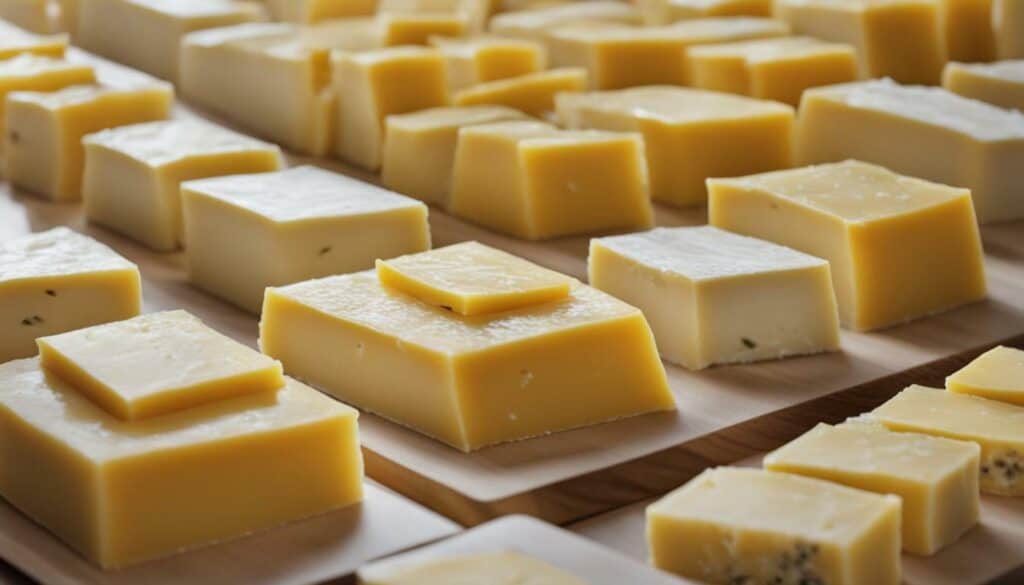
Opting for low-sodium cheese slices not only helps to reduce your overall sodium intake but also provides several other benefits. Firstly, low-sodium cheese can be a great addition to a heart-healthy diet, as excessive sodium consumption may contribute to cardiovascular issues. Secondly, by choosing low-sodium options, you’re making a conscious effort to support your overall well-being and maintain a healthier lifestyle. Lastly, selecting low-sodium cheese slices can also be a suitable choice for individuals with specific dietary needs, such as those following a low-sodium or hypertension-friendly diet.
In conclusion, when it comes to cheese slices, options are available to suit various dietary preferences and requirements. If you’re looking to reduce your sodium intake, choosing low-sodium cheese slices is a smart choice. By reading labels, checking sodium content, and exploring different types of cheese, you can enjoy the goodness of cheese while making healthier choices. Remember, it’s all about balance and moderation to ensure you’re getting the right nutrients from your food.
The Potential Benefits of Probiotics in Cheese Slices
Did you know that cheese slices may contain probiotics, which can have a positive impact on our digestive system? Probiotics are live bacteria and yeasts that are good for our health, especially our digestive system. They help maintain a healthy balance of gut bacteria, improving digestion and nutrient absorption.
While probiotics are commonly associated with yogurt and other fermented foods, certain types of cheese, like some aged and artisanal varieties, can also contain these beneficial microorganisms. The presence of probiotics in cheese slices can provide an additional boost to our gut health when included in our diet.
Probiotics in cheese slices can contribute to a healthier gut microbiome, which plays a vital role in supporting our immune system and overall well-being. By consuming cheese slices with probiotics, we can introduce these beneficial bacteria into our digestive system, promoting a better balance and potentially reducing the risk of gastrointestinal issues.
Adding probiotic-rich cheese slices to your diet is a convenient and delicious way to support your gut health. However, it’s important to note that not all cheese slices contain probiotics. It’s best to check the label or consult with the cheese manufacturer to determine if the specific type of cheese slice you are consuming contains live cultures.
So next time you enjoy a cheese slice, remember that it may not only satisfy your taste buds but also contribute to a healthier digestive system.
Cheese Slices as Part of a Balanced Diet
Incorporating cheese slices into a well-rounded diet can provide nutritional benefits when consumed in the right quantities. Cheese is a versatile food that can be enjoyed on its own or as a topping for sandwiches, burgers, and salads. It is a good source of protein, calcium, and other essential nutrients that are important for overall health.
When choosing cheese slices, it’s important to be mindful of portion sizes and the type of cheese. Different cheeses have varying nutritional profiles, so it’s a good idea to refer to the nutrition labels or consult a healthcare professional for specific dietary needs.
One of the advantages of cheese slices is their convenience. They are pre-portioned and individually wrapped, making them a convenient option for on-the-go snacking or quick meal preparations. However, it’s essential to keep track of your overall calorie intake and ensure that cheese slices are consumed as part of a balanced diet.
It’s worth noting that cheese contains saturated fats, which were once thought to be detrimental to heart health. However, recent research suggests that the saturated fats in cheese may not have the same negative effects on blood fat levels as previously believed. It’s recommended to consume cheese in moderation and opt for low-sodium options whenever possible.
| Cheese | Calories (per 1 oz) | Protein (g) | Fat (g) | Calcium (mg) |
|---|---|---|---|---|
| American | 96 | 6.7 | 7.8 | 202 |
| Cheddar | 113 | 7.0 | 9.0 | 203 |
| Swiss | 106 | 7.0 | 8.1 | 213 |
Whether you enjoy cheese slices as a snack or incorporate them into your favorite recipes, it’s important to remember that moderation is key. By understanding the nutritional value of cheese slices and making informed choices, you can savor their taste while maintaining a balanced diet.

Understanding Portion Sizes for Cheese Slices
It’s important to understand the recommended portion sizes for cheese slices to maintain a balanced diet. Cheese, while delicious, can be high in calories and fat, so knowing how much to consume is key. According to the Dietary Guidelines for Americans, a serving size for cheese is approximately 1 ounce, which is equivalent to one slice of most commercially packaged cheese slices. However, it’s essential to keep in mind that not all cheese slices are created equal, and the nutritional content may vary.
When enjoying cheese slices, be mindful of the type of cheese and its specific portion size. Some cheeses, such as Cheddar or Swiss, typically have a portion size of 1 ounce per slice. However, softer cheeses like Mozzarella or Brie may have a larger portion size due to their lower density. For example, a 1.5-ounce slice of Mozzarella cheese can be considered a serving.
If you’re unsure about the portion size for a specific cheese slice, it’s always a good idea to refer to the packaging or consult a trusted source for accurate information. Keeping track of your portion sizes can help you manage your calorie and fat intake while still enjoying the deliciousness that cheese slices have to offer.
| Cheese Type | Portion Size (approx.) |
|---|---|
| Cheddar | 1 ounce (1 slice) |
| Swiss | 1 ounce (1 slice) |
| Mozzarella | 1.5 ounces (1 slice) |
| Brie | 1.5 ounces (1 slice) |
Summary:
Understanding the recommended portion sizes for cheese slices is crucial for maintaining a balanced diet. While a general guideline is 1 ounce per slice, it’s essential to consider the specific type of cheese, as portion sizes can vary. Softer cheeses may have larger portion sizes compared to harder cheeses. By keeping track of your portion sizes, you can enjoy cheese slices while managing your calorie and fat intake.
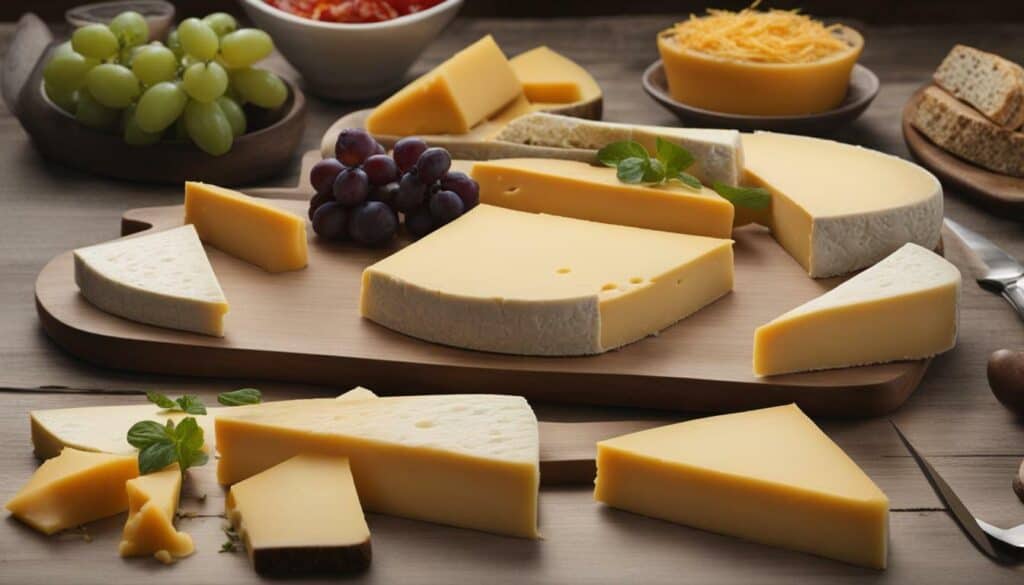
- United States Department of Agriculture. (2020). 2020-2025 Dietary Guidelines for Americans. Retrieved from https://www.dietaryguidelines.gov/
Conclusion
By exploring the nutritional aspects of cheese slices, we can make informed choices about incorporating them into our diets. Cheese, with its rich flavor and versatility, can be a valuable source of essential nutrients. It is important to note that the nutrition content of cheese slices may vary depending on the type of cheese. However, in general, cheese provides protein, calcium, and other nutrients that are beneficial for our overall health.
According to the Dietary Guidelines for Americans, individuals aged 14 and older should aim to consume 3 cups of dairy per day. Cheese can contribute to meeting this recommendation and can be a convenient and delicious way to incorporate dairy into our meals. It’s worth noting that consuming cheese in moderation is key, as it does contain saturated fats. Nevertheless, research suggests that the saturated fats in cheese may not have the same negative effects on blood fat levels as once believed.
For individuals with lactose intolerance, some types of cheese, such as aged and hard cheeses, are naturally low in lactose and may be suitable options. These cheeses can provide the nutritional benefits of dairy without causing digestive discomfort. Additionally, cheese may contain probiotics, which contribute to gut health and overall well-being.
When choosing cheese slices, it’s important to be mindful of sodium content. Different types of cheeses have varying levels of sodium, so opting for low-sodium options can help promote a healthier diet. Remember, cheese is just one component of a balanced diet, and it’s important to consume a variety of foods to ensure we fulfill all our nutritional needs.
In conclusion, understanding cheese slice nutrition allows us to make informed choices that align with our dietary goals and preferences. Incorporating cheese slices into our meals can provide us with valuable nutrients and a delightful culinary experience. So, whether we enjoy them on a sandwich, melt them on a burger, or savor their creamy goodness on their own, let’s embrace the delicious possibilities that cheese slices can bring to our plates!
FAQ
Q: What is the nutritional composition of cheese slices?
A: Cheese slice nutrition can vary depending on the type of cheese. However, cheese slices are generally a good source of protein, calcium, and other nutrients.
Q: How many dairy servings should I consume per day?
A: The Dietary Guidelines for Americans recommend consuming 3 cups of dairy per day for individuals aged 14 and older.
Q: Are cheese slices suitable for individuals with lactose intolerance?
A: Some types of cheese slices, such as aged and hard cheeses, have lower lactose content and may be suitable for individuals with lactose intolerance.
Q: Do cheese slices contain saturated fats?
A: Yes, cheese slices contain saturated fats. However, research suggests that the saturated fats in cheese may not have the same negative effects on blood fat levels as once thought.
Q: Are there low-sodium options for cheese slices?
A: Yes, it’s important to choose low-sodium options when it comes to cheese slices, as different types of cheeses can have different sodium contents.
Q: Do cheese slices provide probiotics?
A: Some cheese slices may provide probiotics, which contribute to gut health. However, the presence of probiotics can vary depending on the type of cheese.
Q: Can cheese slices be part of a balanced diet?
A: Yes, cheese slices can be part of a balanced diet when consumed in moderation.
How Does Chicken Alfredo Compare to Cheese Slices in Terms of Nutrition?
When exploring the nutrition facts of chicken alfredo, it becomes evident that it differs significantly from cheese slices. While chicken Alfredo is richer in protein, vitamins, and minerals, cheese slices are comparatively higher in fat and cholesterol. Hence, individuals seeking a well-rounded meal may opt for chicken Alfredo, balancing taste and nutrition.
Is Babybel Cheese a Healthy Option Compared to Cheese Slices?
When comparing Babybel cheese to cheese slices, it’s important to consider the babybel nutritional information. Babybel cheese is known for its small, round shape and individual packaging. It contains fewer calories and less fat compared to many cheese slices. Additionally, it is a good source of calcium and protein, making it a healthier option overall.

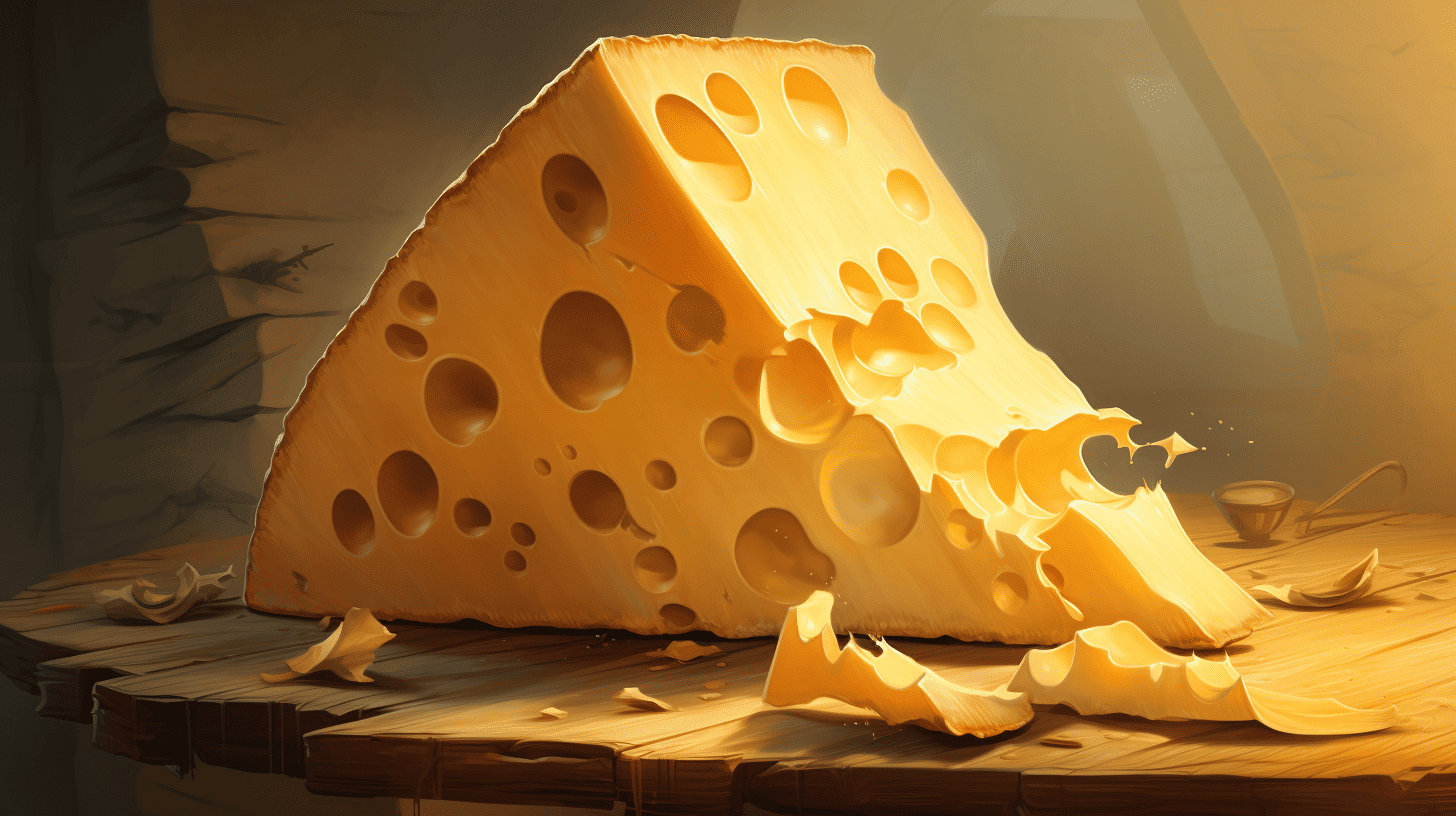
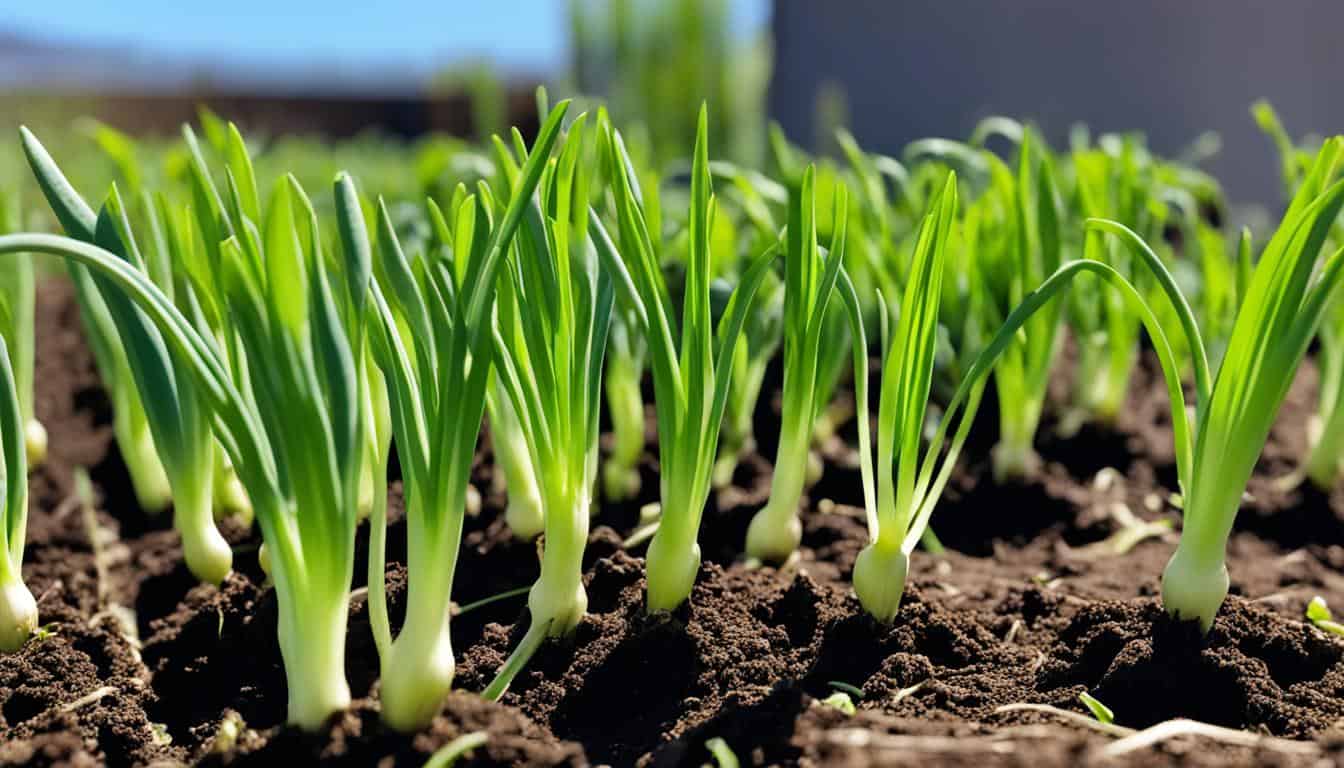


Leave a Reply